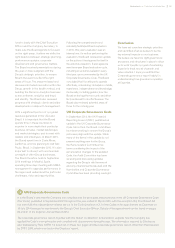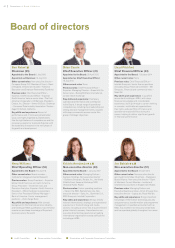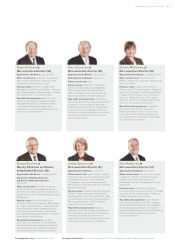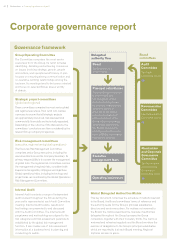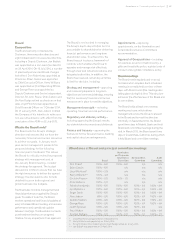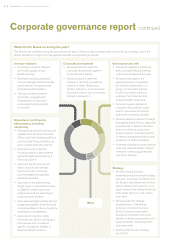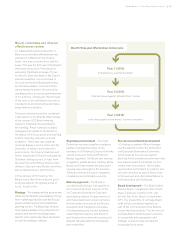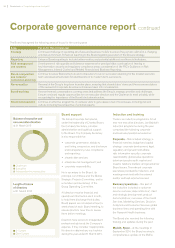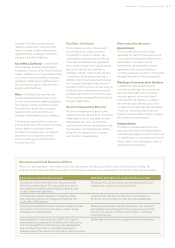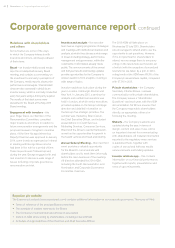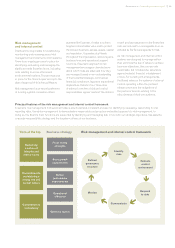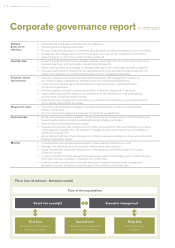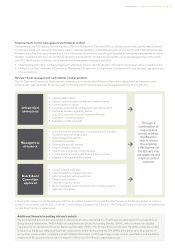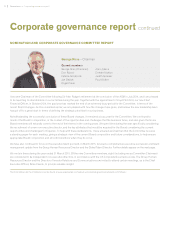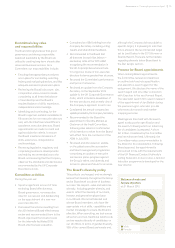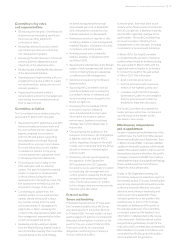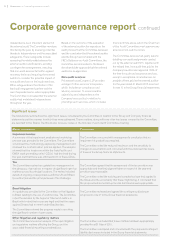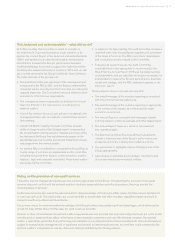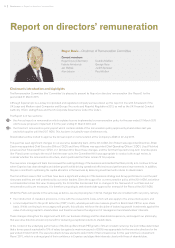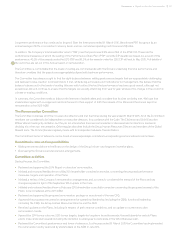Experian 2015 Annual Report Download - page 71
Download and view the complete annual report
Please find page 71 of the 2015 Experian annual report below. You can navigate through the pages in the report by either clicking on the pages listed below, or by using the keyword search tool below to find specific information within the annual report.
Risk management
and internal control
The Board is responsible for establishing,
maintaining and reviewing sound risk
management and internal control systems.
There is an ongoing process in place for
identifying, evaluating and managing the
significant risks Experian faces, including
risks relating to social, ethical and
environmental matters. This process was
in place for the financial year and up to the
date of approval of this Annual Report.
Risk management is an essential element
of running a global, innovation-driven
business like Experian. It helps to achieve
long-term shareholder value and to protect
the Group’s business, people, assets, capital
and reputation. It operates at all levels
throughout the organisation, across regions,
business lines and operational support
functions. Experian’s approach to risk
management encourages clear decisions
about which risks are taken and how they
are managed, based on an understanding
of their potential strategic, commercial,
financial, compliance, legal and reputational
implications. Details of our ‘three lines
of defence’ overview of risk and control
responsibilities appear overleaf. The defence
model provides assurance to the Board that
risks are reduced to a manageable level, as
dictated by the Group’s appetite for risk.
As risk management and internal control
systems are designed to manage rather
than eliminate the risk of failure to achieve
business objectives, they can provide
reasonable, but not absolute, assurance
against material financial misstatement
or loss. For certain joint arrangements,
the Board relies on the systems of internal
control operating within the partners’
infrastructure and the obligations of
the partners’ boards, relating to the
effectiveness of their own systems.
Principal features of the risk management and internal control framework
Experian’s risk management framework provides a structured and consistent process for identifying, assessing, responding to and
reporting risks. It enables management to demonstrate a responsible and proactive embedded approach to risk management. In
doing so, the Board’s main functions are supported by identifying and managing risk, in line with our strategic objectives, risk appetite,
corporate responsibility strategy and the long-term drivers of our business.
Tone at the top Business strategy
Focus on key
strengths
Seize growth
opportunities
Deliver
performance
improvements
Operational
efficiency
Optimise capital
Sustaining
a culture of
integrity and
ethical values
Commitment to
competency
Commitment to
maintaining a
strong risk and
control culture
Risk management and internal control framework
Defined
governance
structure
Communicate
Identify
risks
Evaluate
control
environment
Respond
to risks
Monitor
69Governance •Corporate governance report


